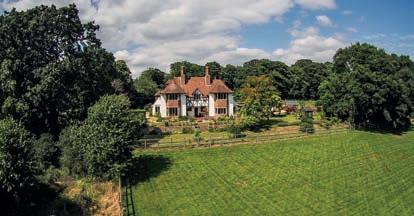
1 minute read
THE LAST BRITISH VERNACULAR?
For eighty years, no ‘era defining’, new house style has endured. Will those of the early 20th century prove to be an increasingly treasured ‘last hurrah’ of British vernacular?
least partly because availability is so low. Outside such exclusive areas, prices are holding firm because the demand is there. Selling prices on deals agreed via our Pimlico and Westminster office, for example, have so far this year averaged 98% of asking price, with volumes on a par with last year. Looking south west (which does have its share of top 1% buyers, mainly for the most favoured SW19 Common-side spots and the dizziest heights of St George’s Hill) the picture is similar. Sales are tending to take longer, because this is more of a family market with the dependent sales, mortgages and ‘off-stage’ disruptions which that involves. Yes, the spark of a boom market, boosted by overseas money flowing from the centre of town is not there. But it remains positive, driven by normal people needing to buy and sell in the normal way.
Post-war homes, many built when time, money and materials were short, have not lasted. So many have been replaced that in London and, increasingly, elsewhere, the choice is between period or very recently built homes. The latter, despite the valiant attempts of a few architects and builders, tend to be either straight copies of period designs, or glassand-steel structures which can be beautiful at small scale but which, at any size, are just too hard for British landscapes.
A hundred years ago, our domestic architecture was admired around the world. The religiosity of the Gothic Revival had relaxed into a comfortable grand-cottagelike character. Architects such as Lutyens and Baillie Scott, inspired by Morris (see back page), looked to craftsmanship and forms derived from observation of landscape and traditional building techniques. These ideals shaped the early 20th century houses that still make such good homes today.
This is exemplified in the fabulous authenticity of properties such as the Art & Crafts house shown above. The point is made, too, by the Queen Anne house shown below. Faced with the lack of recent vernacular styles on which to draw, its modernisers have, understandably, opted for predominately glass additions in the light-touch, essentially internationalist style which modern materials allow. Might a new British vernacular emerge? Form often follows function, so efforts to change building regulations and techniques to allow larger scale modular and prefabricated construction might one day herald a new era. In the meantime, our appreciation of classic early 20th century houses and others true to their period, will only grow.




